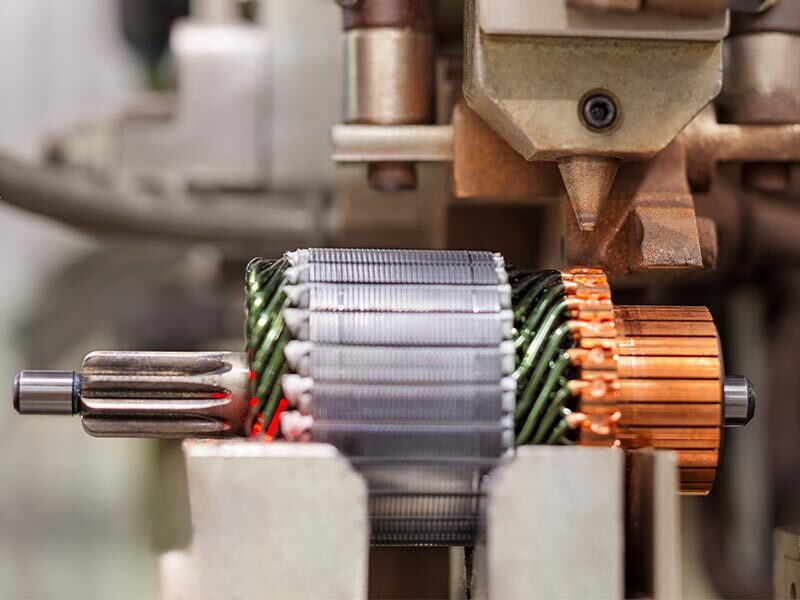According to reports from foreign media, insiders have revealed that India has put forward a plan aimed at promoting domestic rare earth magnet production, which has attracted interest from several large companies. The Indian government plans to provide incentives of up to 25 billion Indian Rupees (approximately 290 million USD) to private enterprises involved in rare earth magnet production, aiming to reduce dependence on Chinese rare earth magnets. These materials are essential for the manufacture of electric vehicles and wind turbines. Mining giant Vedanta Group, led by billionaire Anil Agarwal, JSW Group headed by Sajjan Jindal, and electric vehicle parts manufacturer Sona BLW Precision Forging Ltd. have all shown strong interest in this initiative. Sources indicate that the policy blueprint may soon be submitted for approval by the Indian cabinet, and the final expenditure of the plan is still subject to internal discussions, with potential adjustments in the amount. Currently, China controls approximately 90% of the global rare earth processing business and has tightened rare earth export controls amid trade frictions with the United States, disrupting the supply chains of global automakers, including Indian companies, prompting India to accelerate its plans for the rare earth magnet industry. A policy proposal indicates that India plans to support 3 to 4 large enterprises over seven years to produce about 4,000 tons of neodymium-praseodymium magnets using domestically sourced raw materials. According to the proposed plan, the Indian government will invite companies to bid for annual rare earth production capacities ranging from 500 to 1,500 tons. The proposal states that manufacturers must meet strict criteria to qualify for production, including that half of the value of the final product must come from domestically produced neodymium-praseodymium oxides, a key raw material for high-performance magnets. By the fifth year of production, the domestic procurement requirement will increase to 80%. Insiders have revealed that the plan will establish a two-year preparation period, with the incentive policies implemented in five phases after official production begins. As the electric vehicle industry rapidly develops, the Indian government plans to invest up to 6 billion Rupees for every 1,000 tons of capacity. In response to the reports, a spokesperson for Vedanta Group stated via email, 'Our interest in rare earth magnet manufacturing stems from its strategic value for green technology.' He also mentioned that these minerals 'are quickly becoming a new leverage of global influence.' The Ministry of Heavy Industries in India and JSW Group did not immediately respond to requests for comment via email. Sona BLW CEO Vivek Vikram Singh stated that producing magnets would help secure the company's supply chain. Singh also noted that the company might seek to collaborate with another firm to develop magnet technology. Sona BLW is known to be one of India's largest electric vehicle traction motor manufacturers. Last month, India’s Minister of Heavy Industries H.D. Kumaraswamy mentioned at an event in New Delhi that the country is considering providing incentives for rare earth magnet manufacturers, but did not provide further details. While India's efforts to promote the development of the rare earth industry align with global trends, its budget is limited and the development goals are highly challenging. The process from mine development to building processing plants often takes years, and core technological processes remain highly concentrated in China. Despite being called 'rare earth,' these elements are not rare from a geological perspective. However, economic extraction is quite difficult, and due to their low concentration and association with radioactive elements, they often pose environmental risks. For a long time, India has sought to increase production through domestic manufacturing or overseas projects, but these efforts are still in their early stages. The state-owned Khanij Bidesh India Ltd. is leading efforts to secure mining rights in Latin America and is negotiating with countries like Argentina, Zambia, and Australia. Insiders have indicated that currently, it is nearly impossible to produce magnets in India without subsidies. The necessary oxides are supplied by Indian Rare Earths Ltd., and without capital investment and operational subsidies, the return on investment for projects in this sector would be negative.
India Proposes Incentives to Boost Domestic Rare Earth Magnet Production

Share this post on: